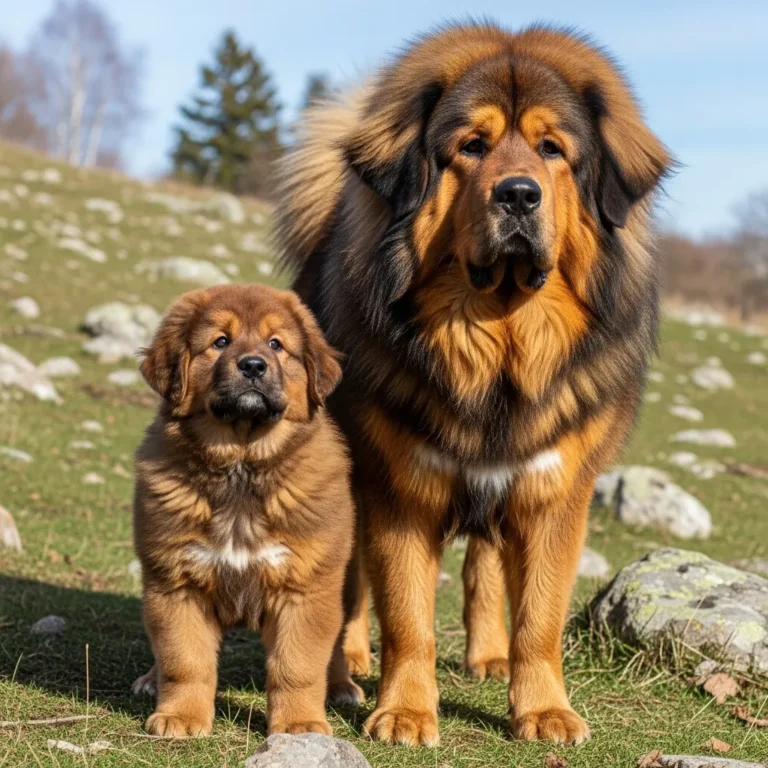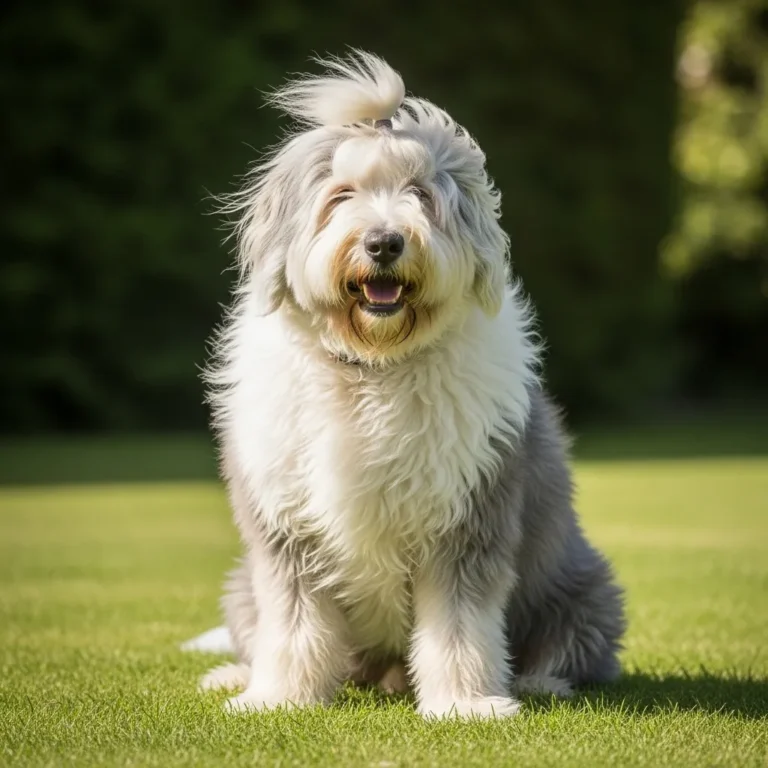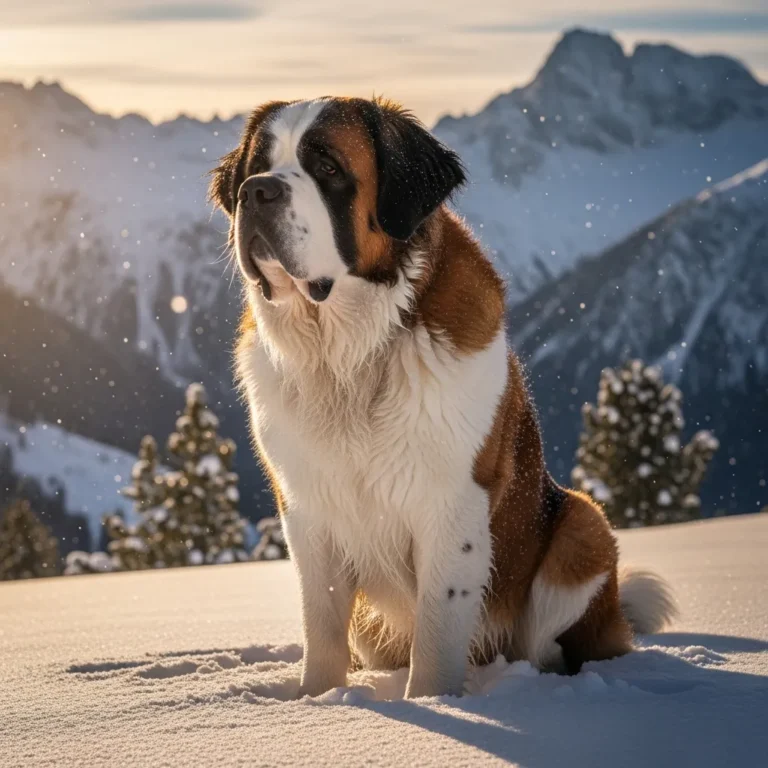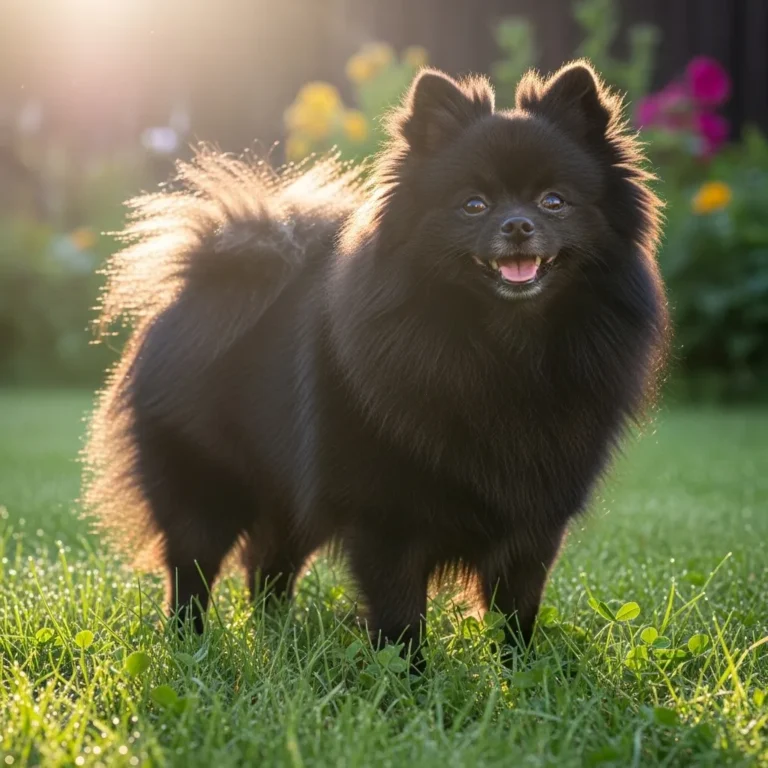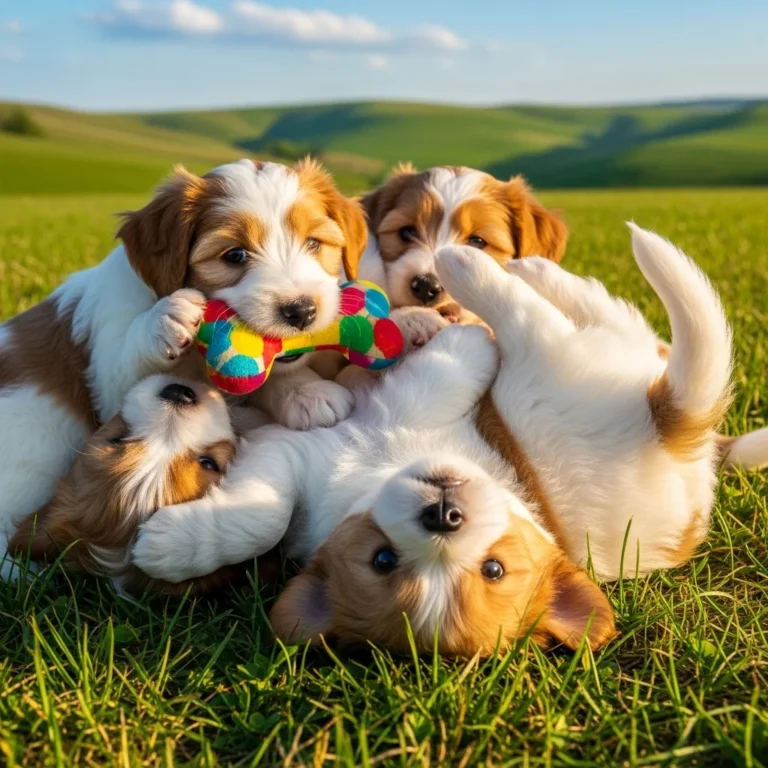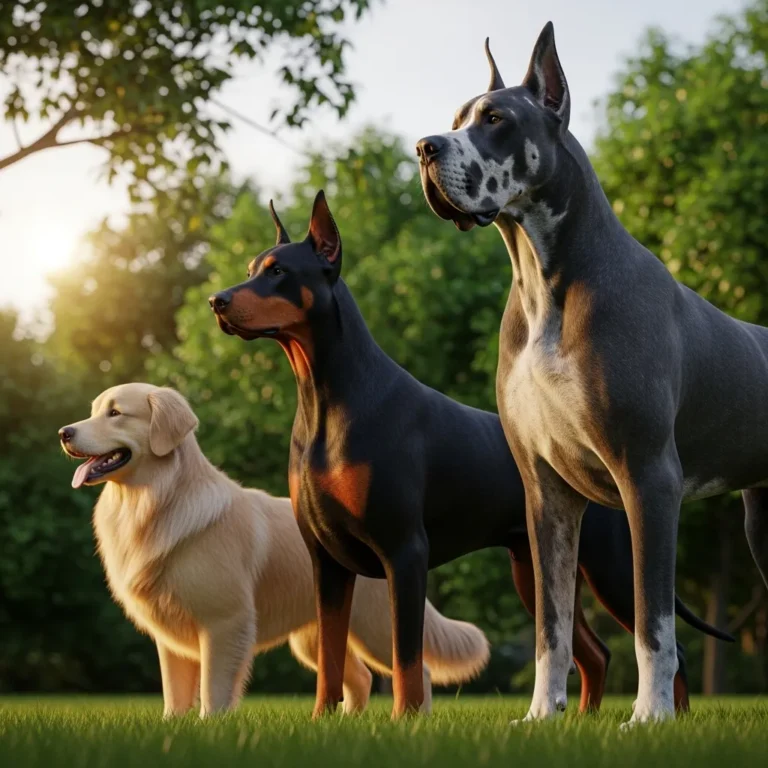
Author: DogsBlogSS Team
⚠️ Disclaimer: This article is for informational purposes only and is not a substitute for consulting a veterinarian.
large dog breeds
If you’ve ever watched a huge dog lumber across a room and thought “Wow, I’d love one,” you’re not alone. Large dog breeds — the kind that make you smile when they flop at your feet, or do a double-take when they nuzzle a toddler — have a special kind of magic. But getting one isn’t just about the thrill of big paws and wagging tails. It’s about honesty: about asking yourself, “Does this dog really fit into my life?”
That’s what this guide is for. I’ll walk you through everything you need to know — from temperament and daily care to growth, grooming, and training. If you’re thinking of welcoming a big dog into your home, consider this a friendly conversation, with all the facts laid out so you can make a thoughtful decision.
Choosing the Right Large Breed (Suitability & Temperament)
Which large dog breeds are best for first-time owners?
According to PetMD, If you’re new to dog ownership, some large breeds stand out as particularly forgiving and easy-going. For example, the Labrador Retriever is often praised for its friendly disposition, patience, and eagerness to please. According to breed profiles, Labradors are “active and friendly, making them great family dogs.”
According to Purina Arabia, Similarly, many owners find them accommodating of a beginner’s mistakes — they’re generally forgiving, sociable, and love to bond.
According to PetMDو If you want a gentler pace, consider sighthounds like the Greyhound. Though they’re large, Greyhounds are often described as calm at home — they enjoy lounging indoors and don’t demand the constant activity many big dogs do.
What are the best large dog breeds for families with children?
According to PetMD, When kids are in the picture, temperament, patience, and social tolerance become key. Breeds like Labradors often rise to the top — known for their affectionate nature, tolerance for rough play, and generally gentle behavior around youngsters.
With a dog like that, you’re more likely to have a family pet that welcomes laughter, chaos, and small hands tugging at ears or fur — rather than a nervous, high-strung companion.
Are there any calm or low-energy large dog breeds?
According to PetMD, Absolutely — the myth that “all big dogs are energetic bulldozers” is just that: a myth. The Greyhound is a great example. Despite their athletic history, many Greyhounds are surprisingly mellow indoors, happy to snooze for hours after a brief walk or sprint.
These gentle giants show that “large” doesn’t always mean “high-energy.” If you’d rather come home after work and flop on the couch with a furry friend, a calm large breed might suit you well.
Which large breeds are known for being good guard dogs?
On the other hand — if what you want is security, watch dogs, or just peace of mind — some larger breeds are more alert and protective. Breeds such as German Shepherd or Rottweiler are often cited for their guarding instincts. These dogs tend to be attentive and wary of strangers — but importantly, a good guard dog doesn’t mean a dangerous one. The difference lies in training and socialization, to ensure protection without needless aggression.
If you go this route, think carefully about the dog’s temperament, your experience, and how you’ll manage interactions with family, visitors and neighbourhood pets.
Do large dogs get along well with other pets and cats?
According to PetMD, That depends — while many large dogs can coexist peacefully with other animals, things like prey drive and early socialisation play a huge part. For instance, the Greyhound, despite being gentle and calm, has a strong prey drive rooted in its hunting heritage. This makes them less ideal for homes with small pets, unless you’ve committed to a careful, consistent socialization process.
If you have cats, rabbits or other small animals, it’s worth doing extra homework before choosing a breed — mixing size and prey instincts can lead to complicated dynamics.
Housing & Lifestyle (Space & Activity)
Can large dog breeds live comfortably in apartments?
At first glance, you might assume no — but the answer is: sometimes, yes. It really depends on the breed, its energy level, and how much time you commit to walks and mental stimulation.
According to ForRent, Take the Greyhound again. Many sources say that despite their size, they adjust well to apartment living. They appreciate a short daily walk or sprint, but once back home, they’re content lounging around.
On the flip side, a high-energy working breed would almost certainly feel cramped in a small space without a yard.
So: big dogs can live in apartments — but ideally only if you choose the right kind of big dog for your lifestyle.
How much daily exercise does a typical large breed require?
According to Houndsy, It depends a lot on the breed’s background. According to a general guideline: high-energy large dogs may need up to 1.5–2 hours of vigorous activity daily; moderately active breeds like Labradors or German Shepherds often thrive on around 1–1.5 hours.
That could be a mix of walks, playtime or interactive games. For calmer breeds, shorter walks might be enough — but consistency matters.
Can large dogs be left alone during the day?
This is a common challenge for busy people. Leaving any dog alone for long stretches isn’t ideal — but with large dogs, there’s an added dimension: size. A bored or anxious large dog has the potential to do real damage, simply because of strength and mass.
If your lifestyle demands you’re away for long hours, a large dog may struggle — unless you plan carefully with enrichment, exercise, or even dog-sitter visits.
Maintenance, Grooming, and Feeding
Are there any large dog breeds that don’t shed (Hypoallergenic)?
According to PetMD, For people with allergies or sensitive noses, low-shedding or hypoallergenic large breeds can be appealing — but they’re relatively rare. Many large breeds have double coats or thick fur (think Labradors or Huskies), which means regular shedding.
There are exceptions — some breeds like the Giant Schnauzer or the larger varieties of Standard Poodle tend to shed less and may be more manageable for homes sensitive to dander.
But generally: expect shedding with most big dogs, and plan for regular brushing.
How much food does a large dog breed eat per day?
According to Purina Institute,Feeding a large dog is a commitment. Their caloric and nutritional needs are significantly greater than small or medium breeds. According to guidelines for large and giant-breed puppies: while puppies need more energy per unit of body weight than adults, once they mature, the goal is to maintain a healthy, steady growth to protect their joints and bones.
That means a quality diet formulated for large breeds, careful monitoring of growth, and avoiding overfeeding — both for health and financial reasons.
Which large breeds require the most grooming and maintenance?
According to PetMD,Large, double-coated breeds tend to demand more upkeep. For instance, a breed with thick fur will likely shed heavily and may need frequent brushing, occasional baths, and routine ear/nail care.
On the other hand, short-haired breeds (for example, many Mastiffs or some sighthounds) are often easier: less shedding, simpler grooming, and lower maintenance overall.
Biology, Growth, & Lifespan (Managing Expectations)
Why do large dog breeds have shorter lifespans compared to small dogs?
According to PetMD,It may seem backwards — larger animals often live longer — but in dogs the opposite is true. Researchers believe this is mainly due to how quickly large breeds grow and the physiological strain of maintaining a massive frame.
According to PetMD, Large dogs tend to age faster, and their bodies endure more wear-and-tear. They are also more prone to serious issues such as joint problems, heart disease, and certain cancers.
Small dogs, conversely, often live significantly longer — which is one of the trade-offs when you choose “big.”
At what age is a large breed dog considered fully grown?
According to Lancaster Puppies, Large — and especially giant — breeds mature more slowly than smaller dogs. For many, reaching full physical maturity takes 18–24 months, sometimes even longer.
That’s important to know, because those early months are critical: pushing too hard too soon (e.g. heavy exercise, long runs) can stress developing bones and joints.
What is the difference between “Large” and “Giant” dog breeds?
Though there’s no single universal classification, many use weight and size as a general guideline:
- Large breeds: Typically over about 50 lbs (≈ 22–23 kg), but not extremely heavy or massive.
- Giant breeds: Usually significantly larger — often over 90–100 lbs (≈ 40–45+ kg), with heavier bone structure and bulkier frames.
According to PetMD, Because of their size, “giant” breeds come with increased risk for joint issues, slower growth, and generally shorter lifespans than moderately large breeds.
Training & Behavior
Are large dogs harder to train than small dogs?
Not necessarily in terms of learning — many large breeds are intelligent and capable. But their physical strength can make training more challenging, especially on leash or in situations where control matters. A stubborn or untrained large dog can be harder to manage than a small one.
According to PetMD, For breeds like the Labrador, which are eager to please, training tends to go smoothly.
But for more independent breeds — say, certain sighthounds — patience and consistent, gentle training are important. Harsh methods rarely work with a sensitive, strong-willed dog.
How important is socialization for large breed puppies?
Socialization is crucial. With small dogs, misbehavior may get annoying — but with a large, powerful dog, an under-socialized puppy can grow into a dangerous adult. A large dog who doesn’t learn manners early can easily overpower a child, knock over furniture, or react unpredictably to stress.
That’s why early exposure to different people, pets, environments, and situations is so important. Good socialization helps ensure your large dog grows into a confident, well-behaved companion rather than a liability.
A Few Breed Sketches (Examples)
To help make things more concrete, here are quick snapshots of two breeds that illustrate how different “large” dogs can be:
According to PetMD:
Greyhound — Sleek, gentle, and surprisingly calm indoors. If you want a large dog that naps on the couch and doesn’t demand constant activity, they’re a top pick. That said, their prey drive and potential for bloat mean you need care and awareness if you have small pets or plan to run.
According to PetMD,:
Labrador Retriever — A friendly, active, people-loving dog. Great with kids, good with other pets, and naturally eager to bond. They need regular exercise and can shed a fair bit — but if you have the energy and time, they often become beloved family members.
Closing Thoughts
Choosing a large dog is — in many ways — a decision of the heart. There’s something undeniably beautiful about a big dog: the way they fill a room, the steady weight of their presence, the joy of long walks with a loyal companion. But it’s also a choice that requires honesty, commitment, and respect for what a large dog needs: space, time, training, and understanding.
If you’re thinking about welcoming a large breed into your home, I hope this guide helps you do so with eyes wide open. Because in return for your care and attention, these giant hearts on paws have an uncanny ability to become, quite literally, part of the family.
Notice : The DogsBlogSS editorial team is dedicated to providing accurate, research-based information about dog health, behavior, and care. All our articles are fact-checked using trusted veterinary sources such as VCA Hospitals, Merck Vet Manual, and the AKC.
you may like it
